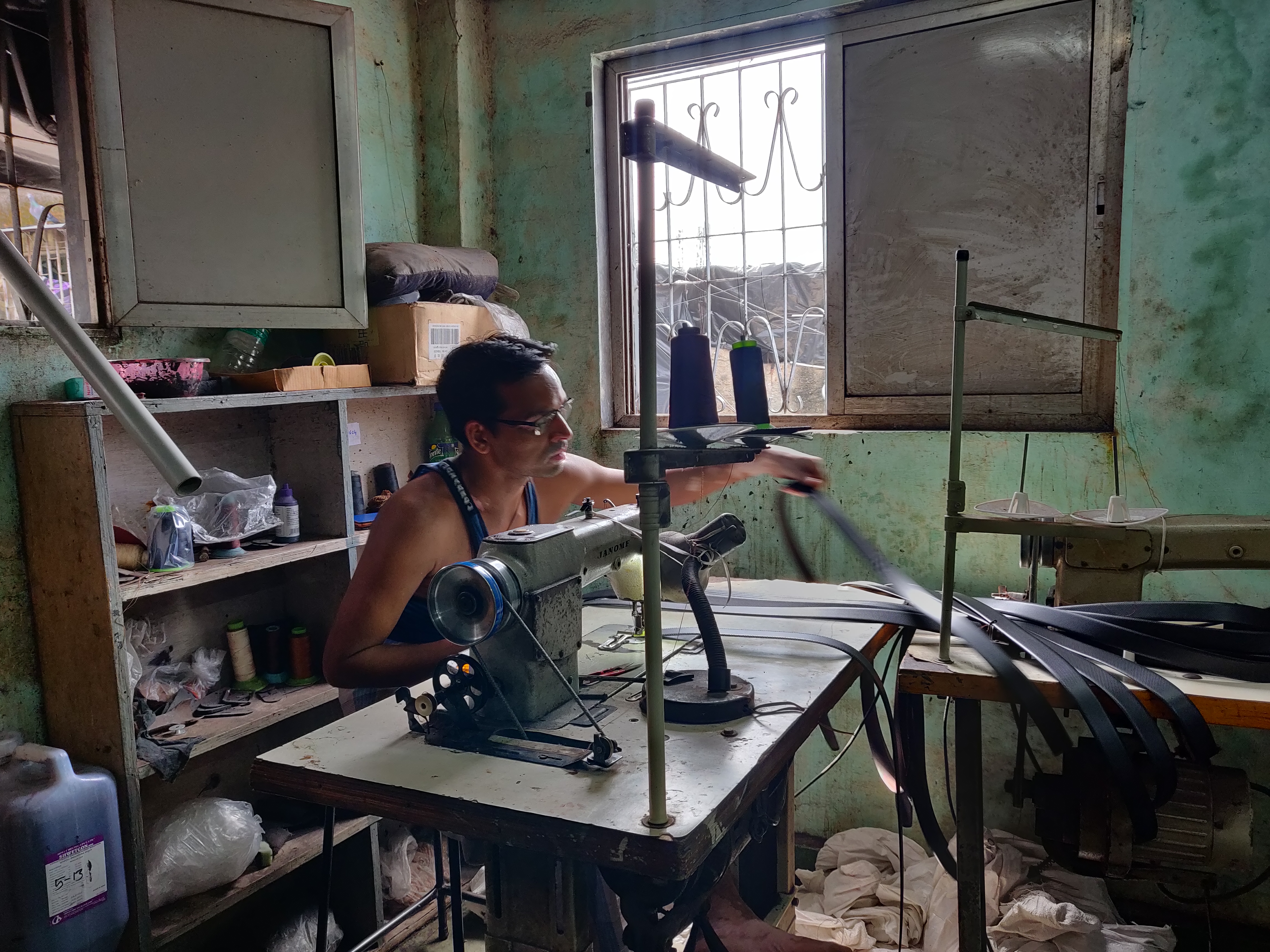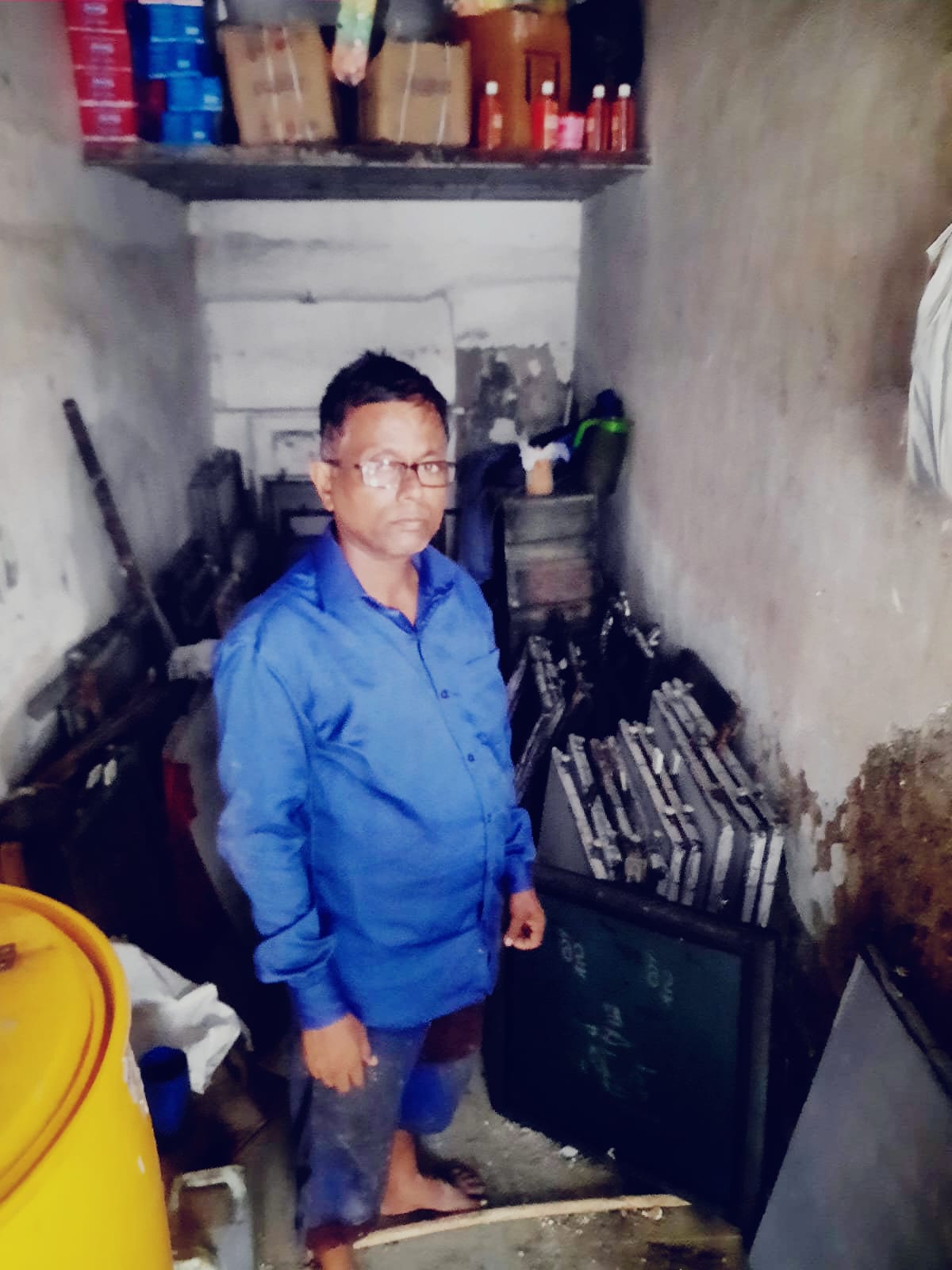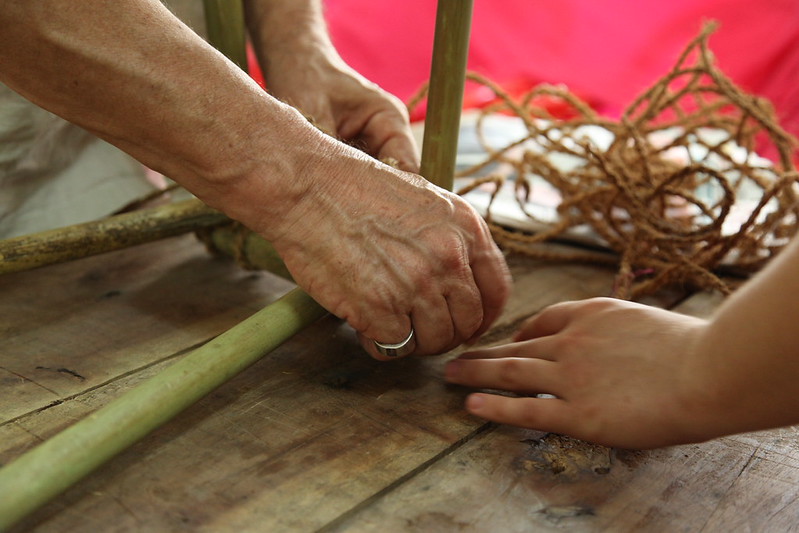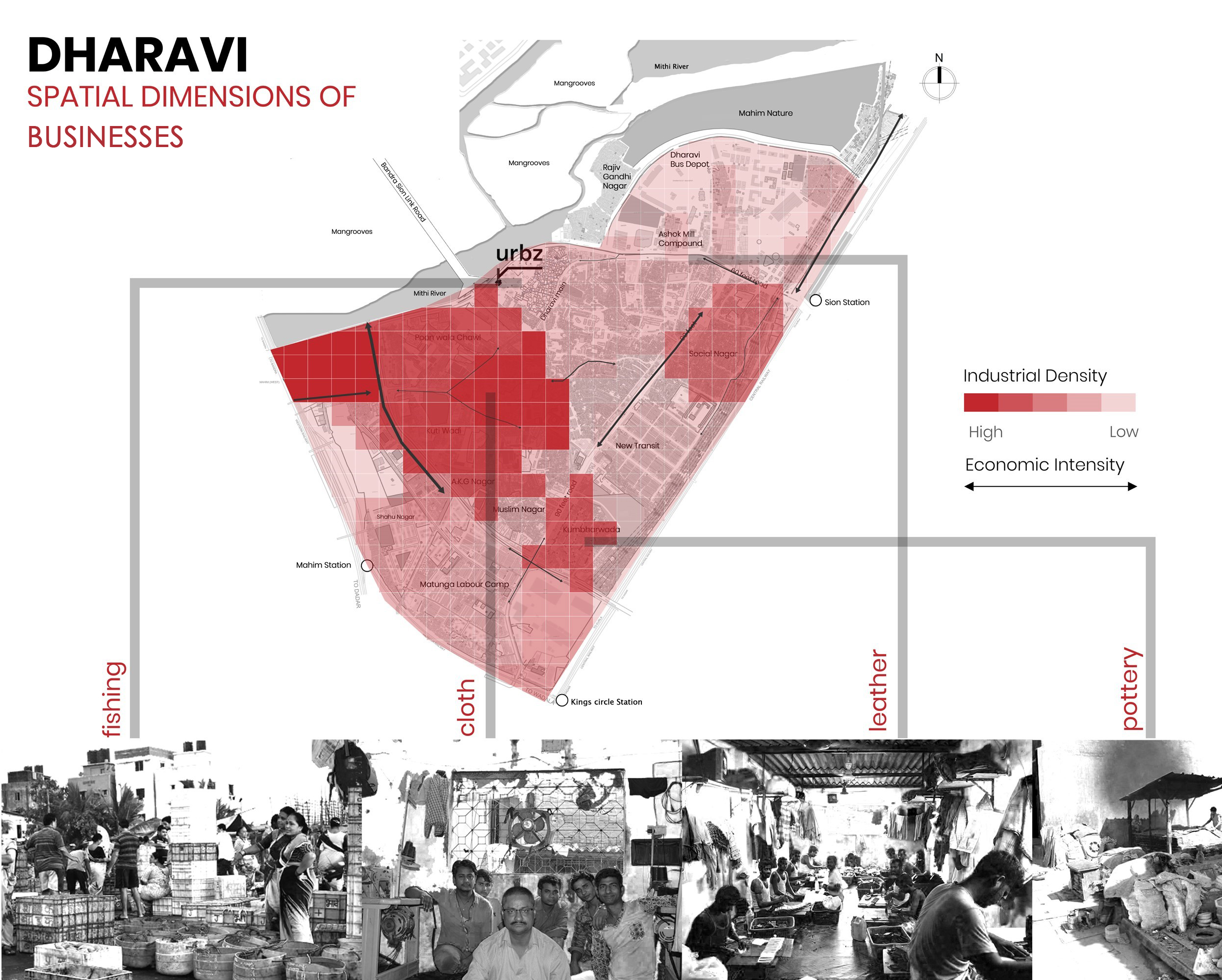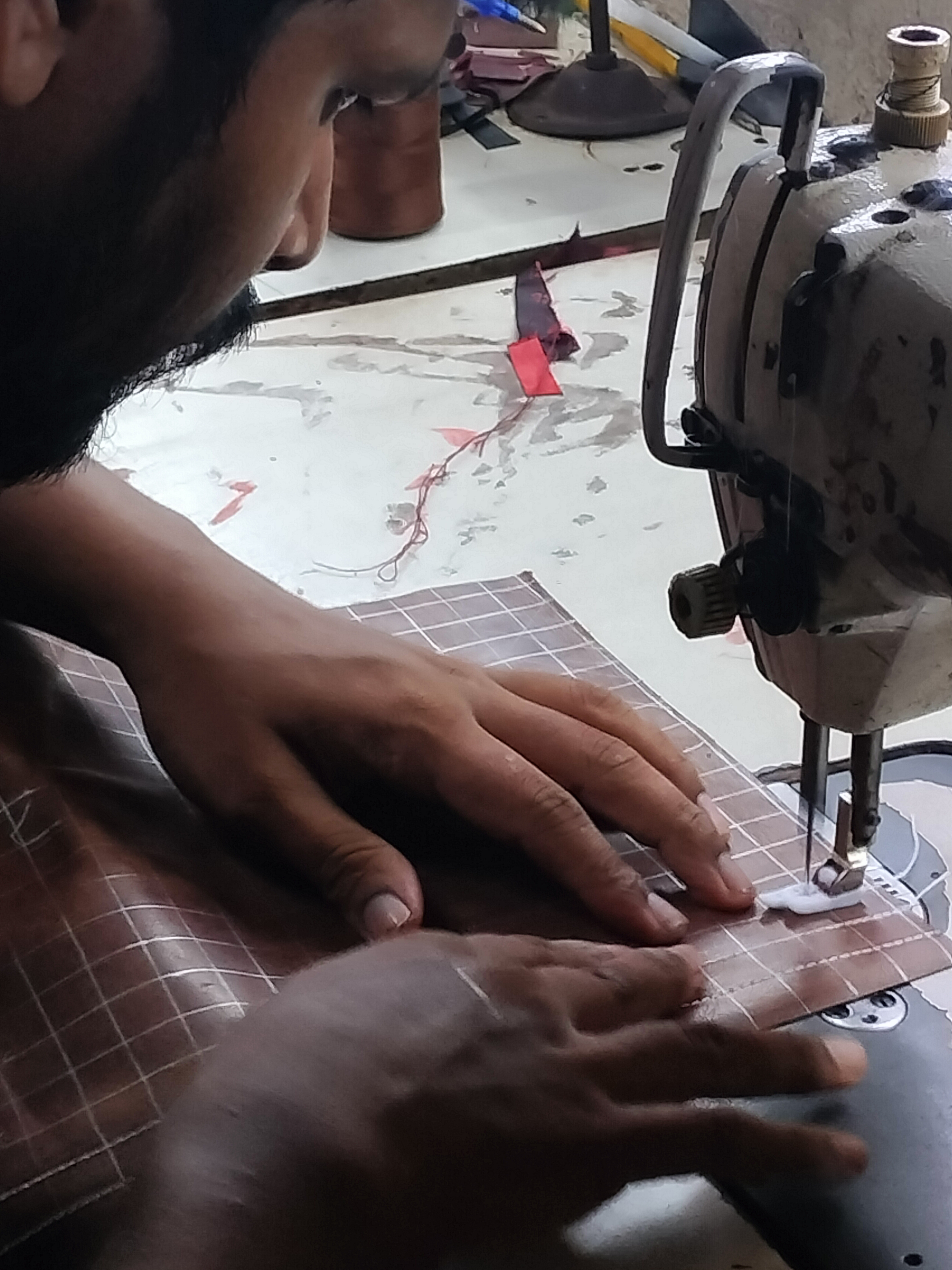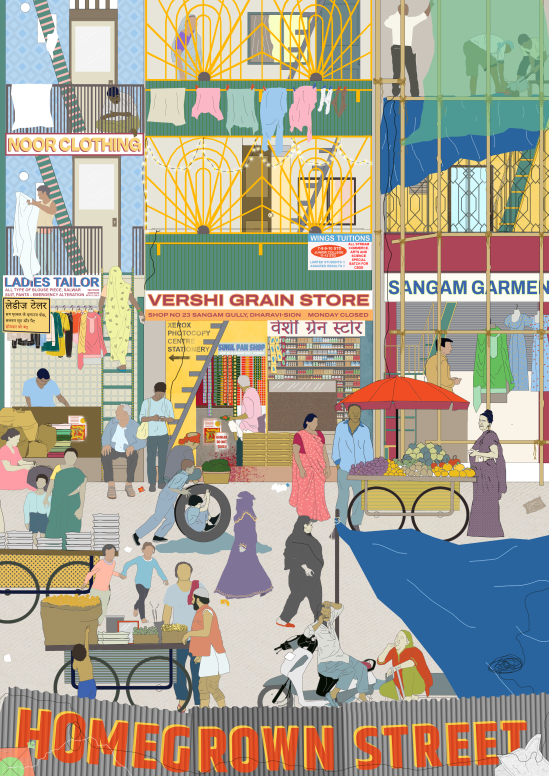Resilience and recognition of an unseen typology – part 1

Resilience and recognition of an unseen typology – part 1
Coined by urbz the tool-house is a “is flexible live-work arrangement […] because the space of the house itself is used as a productive tool in all kinds of creative ways. A tool-house emerges when every wall, nook and corner becomes an extension of the tools of the trade of its inhabitant—when the furnace and the cooking hearth exchange roles and when sleeping competes with warehouse space”. Thus, the tool-house, as a prevalent live-work typology in Dharavi, embodies a broader category of ‘workhomes’ found globally. These structures are not merely architectural forms; they represent the fusion of dwelling and workplace, reflecting a variety of living and working permutations. This integration of living and working spaces in the tool-houses of Dharavi is at the heart of neighborhood life, encompassing built form, economic activity, and social interaction.
The unseen history
Historically, mixed-use habitats, as the tool-house, integrating dwellings and workplaces been present across various countries and cultures for centuries, yet remained invisible in terms of heritage, preservation, and history. Holliss introduced the term ‘workhome’ to encompass structures combining living and working spaces, reflecting a diverse range of living, and working permutations. This typology plays a crucial role in the history of urban and economic development globally. While globally recognized typologies such as Machiya in Japan or Townhouses in Europe or the Shophouses in Singapore may be celebrated, the tool-house in Dharavi remains invisible, challenging the societal norms tied to social class and status. Nevertheless, the tool-house is a resilient typology, influencing the very form of Dharavi. The use of materials like plastic and tin sheets reflects the adaptability and resourcefulness inherent in this resilient typology of settlement, that has evolved over more than a century housing diverse populations with the diverse populations from all over India.
Various typologies
The tool-houses within Dharavi represent a diverse range of economies, adapting to contemporary demands and markets and producing different typologies. Notably, the typology of Kumbharwada, the potters’ neighbourhood, evolving almost a century ago, displays spatial clustering reminiscent of pre-industrial artisanal structures conducive to pottery production: a linear court cluster with large courtyards in between built-up spaces. The two-story buildings are divided as needed to produce pots, with separate areas for living, work, storage, and courtyards that are used as mud pits. In comparison, the AKG Nagar, which is one of densest Nagar within Dharavi, is mainly functioning as a residential unit with small tailoring industries creating a remarkably different layout and density. The tanneries, recycling workshops occupy much more open space, due to the nature of their operations, requiring extensive areas for the processing and handling of materials and to accommodate machinery, storage, and waste processing. All these practices, integrated into modern production chains, maintain a significant level of specialisation and customization. The availability of high-quality and affordable local skills facilitates continuous testing and experimentation, highlighting the crucial role of immaterial practices in the production process.
Tool-houses of Sangam Gully
 Isometric Representation of 21 Toolhouses in Sangam Gully, dimensions both in feet and meters.
Isometric Representation of 21 Toolhouses in Sangam Gully, dimensions both in feet and meters.
But how does this typology manifest? To explore this at the neighbourhood level, urbz has investigated the history, the built structure, and the aspirations of the residents along a specific street section in Dharavi – Sangam Gully. The inhabitants and workers of Sangam Gully have diverse geographical origins, spanning Mumbai and extending to regions such as Rajasthan, Uttar Pradesh, and Tamil Nadu. Within the tool-houses of this community, family structures exhibit considerable diversity, with certain tool-houses serving dual functions as both residences and workplaces. To underscore the variety of existing structures, here is a selected overview of some typologies and their inhabitants: from Bharati Pawar's multi-level building housing garment retailers to Abdul's Dargah, sustaining itself through rental shops and an LG gas business, the tool-houses in Sangam Gully represent a microcosm of diverse economic activities and family structures.
Bharati's house
Bharti, a native of Sangam Gully, has a deep-rooted connection to the area, having been born and raised there. Three years ago, she invested in a local building, that has since seen all its floors leased to various occupants. The building, with a footprint of 11’ x 28’8” (excluding the plinth) and a current Built-Up Area (BUA) of 850 sq ft, hosts an array of activities across its levels. On the ground floor, the space is divided: the front section houses a garment retailer, while the rear accommodates a worker and his family of four. The first floor has been transformed into a T-shirt workshop, engaging seven to nine workers in its operations. The second floor is tenanted by a manufacturer, producing a range of items from clothing to bags, tailored to client specifications, and employing up to ten workers.

Isometric representation of Bharati's house
Durgha
Abdul, hailing from a Tamil Nadu village, has been overseeing the Dargah for over five decades since moving here post-marriage. His family, including five sons and seven daughters, all married, is deeply rooted in this tradition. The sons, along with their own families, have made their homes on top of the Masjid. The G+3 structure, with a footprint of 25’6 x 38’11, accommodates the Dargah and three rental shops on the ground floor. The income from these shops sustains the Dargah maintenance. Additionally, the family operates an LG gas shop (gas cylinders) at the structure's rear, facing the 90ft Road.

Isometric representation of Abdul's house
Ibrahim Ansari
Ibrahim Ansari's family has a long-standing history in Sangam Gully, tracing back to the pre-independence era. Ibrahim, along with his wife Shehnaaz Parveen and their six-year-old son, resides in Dharavi, while his two brothers live elsewhere in the same area. The family's original business was in timber and making wooden frames for jhari (silk embroidery), but they had to pivot as the market for their traditional trade declined. Ibrahim transformed his portion of the land into a G+1 structure, with a footprint of of 19’ x 18’8". He occupies half of this plot, running a garment store on the ground floor and living above it. The other half of the plot is rented out, consisting of a readymade dress shop on the ground floor and a bag-making factory above it.

Isometric representation of Ibrahim's house
Anil Hinduja
Anil Hinduja, with his four brothers, managed a renowned restaurant in Sangam Gully for over two decades. After shifting from Karachi to Pune post-independence, the family eventually found their home in Dharavi. Following their father's demise, they rented out the restaurant and focused on individual ventures. The next generation, pursuing professional degrees, aims to establish their practices. The buildings footprint is 20’5 x 20’5. The ground floor of their structure is divided, housing both a restaurant and a garment store. The restaurant's loft serves as a sleeping quarter for its workers, who migrate between city work and village breaks. The upper floor is exclusively dedicated to a rented-out garment production factory, with the workers 7-8 workers residing within.

Isometric representation of Anil's house
Economic Landscape and Interdependencies
Beyond Sangam Gully specialising in garment, other activities within the domain of "production" range from traditional artisanal practices like embroidery, leatherwork, and pottery, to small-scale manufacturing activities such as carpentry, food processing, and recycling. Additionally, emerging service-industry activities like legal advice, electronic repair, coaching classes, programming, and coding contribute to a dynamic economic landscape. These industries adapt to evolving economic needs and production techniques, catering to local, regional, national, and global markets. The intricate interconnectedness of material flows, production processes, and ecological consequences underscores varying levels of interdependencies.
The Role of Recognition
Therefore, recognizing this typology in terms of built form, economic activity, and the individuals inhabiting and working within it reveals the foundational narrative shaping the images of Mumbai as the "economic capital" or a "world-class city." Scrutinizing the history of Mumbai and reevaluating the conventional image of the economic capital through the lens of material flows, dependencies, and ensuing ecological and social consequences unveils a narrative that extends beyond the celebrated personas and acknowledged spaces. It brings to light the essential roles played by individuals involved in crafting leather bags, producing pottery, sewing garments, building houses, recycling the city’s waste, preparing food, and repairing mobile phones. The acknowledgment of this narrative exposes the fallacy that Dharavi and its residents are expendable and not integral to the city's dynamics. Thus, not acknowledging the history, the typology and the resilience of Dharavi is the neglect of its history and significance in the context of profound inequalities.





